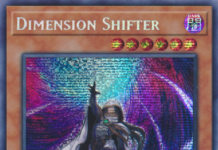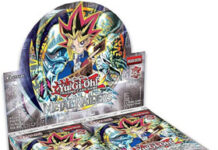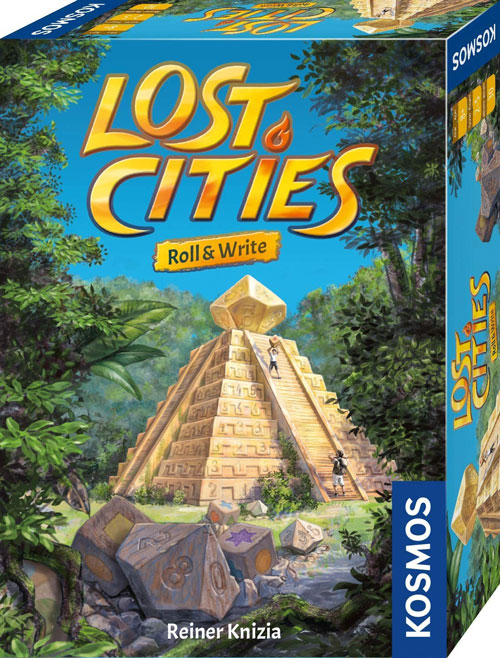
Lost Cities Roll & Write is a new board game from Kosmos Games. The game is based on the Lost Cities Card game that has sold over a quarter million copies worldwide. Lost Cities Roll & Write is for 2-5 players, ages 8+, and takes about 30 minutes to play.
Lost Cities games are about making profitable expeditions down colorful paths. The further you go down a path, the more points you will earn. This Roll & Write reminds me more of the Lost Cities Board Game than the Lost Cities Card Game (which we reviewed in 2019). The Lost Cities Board Game has 5 different colored paths on the board that can award positive or negative points depending how far you make it down each path.
Roll and Write versions of games have gotten very popular lately. This Roll and Write version of Lost Cities has a nice Lost Cities feel to it, and is faithful to the original card game and board game.
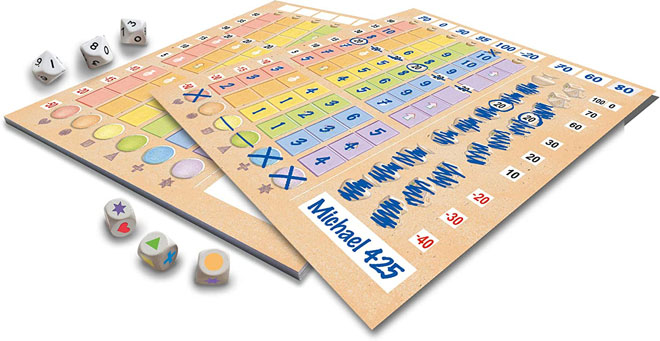
What’s in the Box?
The Lost Cities Roll & Write Box is a travel-sized box that is about: 1.5″ x 5″ x 7 inches. I think the box art is great!
The box simply contains:
- 3 x 10-sided dice (wood)
- 3 x Colored dice (wood)
- 1 Scorepad
- 2 Rule Books (English and German)
The scorepad sheets are two-sided, and the scorepad is actually pretty thick. Don’t quote me on this, but I would guess there are about 100 (2-sided) scoresheets in the box.
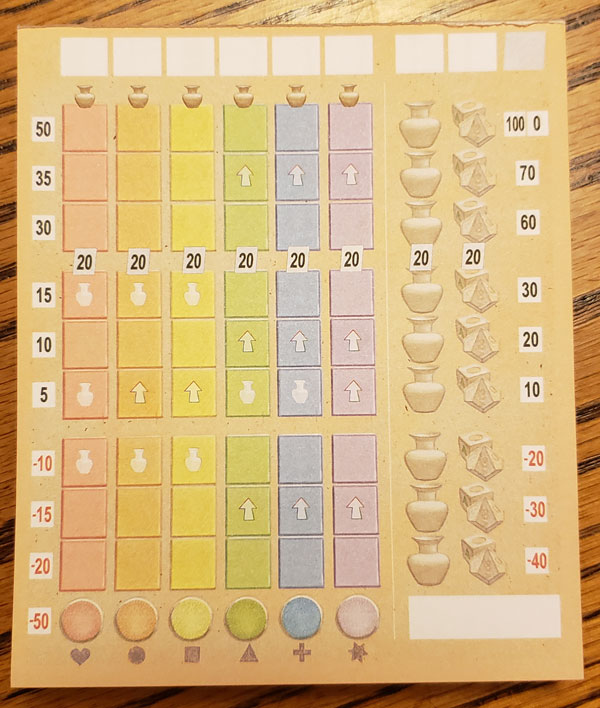
How does Lost Cities Roll & Write play?
The goal of Lost Cities Roll & Write is to score the most points. You do this by traveling up different colored paths (expeditions). The further you go up a path, the more points you get. Players will write lowered number rolls on the bottom rows, and write sequentially higher numbers (or the same number) up the column as the game progresses.
Each player is given a scoresheet. The scoresheet has 6 paths on it: Red, Orange, Yellow, Green, Blue and Purple. Shapes are also present on the colored dice to help people that might be color blind.
The Starting Player will roll all 6 dice, and the starting player is allowed to pick 1 colored die and one numbered die and keep that for themselves. Let’s look at an example:
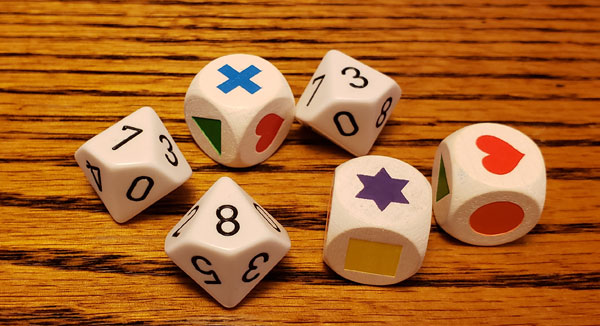
The Starting player has rolled:
- Blue, Purple, and Red
- 3, 7, and 8
Now the Starting player has can grab two dice for themselves. Let’s say the Starting player grabs the Red and the 3.
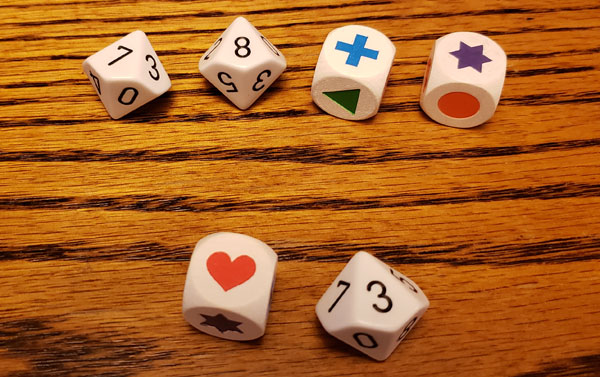
The starting player has decided to start trekking up the Red Path, and their lowest number is 3. They will no longer be able to use 1 or 2 on this path. In a future turn they will have to use 3 or higher to continue up the column.
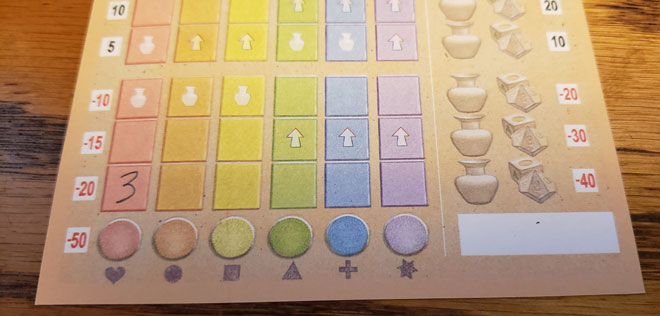
There is no more drafting of dice on this turn. These 4 remaining dice are open to all other players. The rest of players in the game now will use these 4 dice to write something on their score sheets. These are pretty sad numbers to start on any colored path. So the players are allowed to refuse the dice. There is a column on the right for Refused Dice as well.
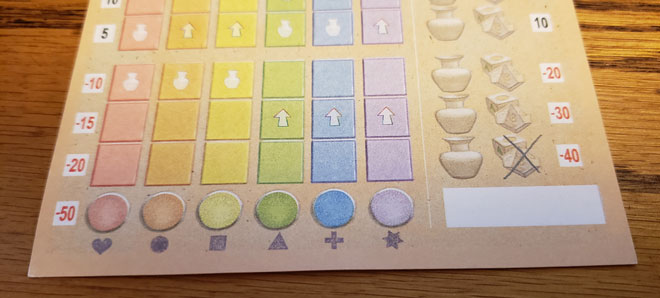
After everyone has scribbled something on their sheets, the dice are passed to Player 2 and the game continues clockwise until the game ends.
Game Notes:
Once you start up a track (up a column) it will give you negative points early, and get better and better as progress. This is just like the main Lost Cities Games for experienced players.
Artifacts – Artifacts are the items that look like vases. The more you uncover (or cover), the more bonus points you get the end of the game.
Arrows – The Arrows are Acceleration Bonuses. If you write a number over an arrow, you are allowed to write another number in any colored path on your sheet.
Refusing Dice – Players are always allowed to refuse the dice. You can earn bonus points by refusing dice. But if you refuse dice 9 or more times, you will get zero bonus points.
Bridge Bonuses – There are 8 Bridge Bonuses in the game where you see the number “20”. The first player to reach each bridge in the column earns that bonus.
0’s and 10’s – With the 10 sided dice – Zeros are always considered Tens. Except, you can use a Zero dice roll to start a path (column) as a doubler. You can use a zero to “X” the bottom of the column to indicate you are risking doubling that column. You never actually write down the number Zero though.
Game End
The game ends when everyone has had 9 Dice Refusals, or when all eight Bridge Bonuses have been collected.
Here is a look at a finished Score Sheet from one of our games. This game ended with all of us having 9 or more Dice Refusals.
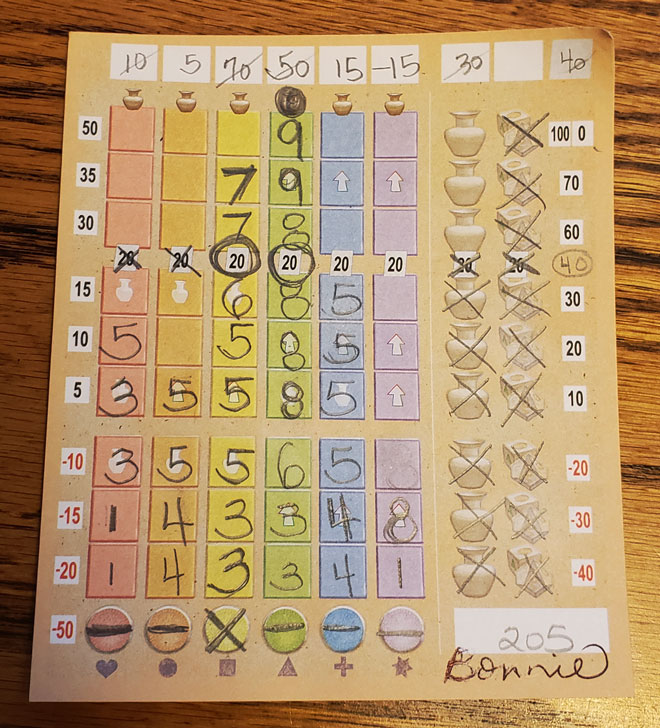
Bonnie doubled her Yellow Path. She had negative points in her Purple Path. She was the first person to reach two of the 20-point bridges. She found 6 Artifacts for 30 points. And she used up 9 or more of the Dice Refusals. She wound up with 205 points.
Likes, Dislikes and Final Thoughts
Likes
If you have played Lost Cities, this has a pretty good Lost Cities Feel to it. Just like in the card game and board game: Do you want to open all 6 pathways? Or do you just want to concentrate on 3-4?
The game is very simple to teach and simple to learn. The rule book is 8 pages, in full color, and teaches the game very well. There are also YouTube videos you can watch to learn how to play. Once you learn the game, you won’t have to constantly look at the rulebook either, which is nice.
There are plenty of scoresheets in the box. You might want to take 5 of them and laminate them for future use. I usually do this for all my Roll & Write Games.
There are good decisions to be made during the game. You are always contemplating Refusing Dice, but that Bonus of only 7 or 8 Refusals is nice too.
The game truly takes only 30 minutes to play, and does not overstay it’s welcome.
The Acceleration Arrows can make for some fantastic chains if you can swing a few together!
Dislikes
There is not too much to dislike here. The components are typical for a Roll & Write game. The only problem we had was that one of blue dice was not completely painted in the “+” sign. We had to break out a blue marker to fill in the paint. But our non-permanent marker eventually came off on our hands.
There is obviously a luck factor involved when you break out dice for gaming. You can get bad rolls during your turn, and you can get bad rolls during other players turns. It’s just the way some games go.
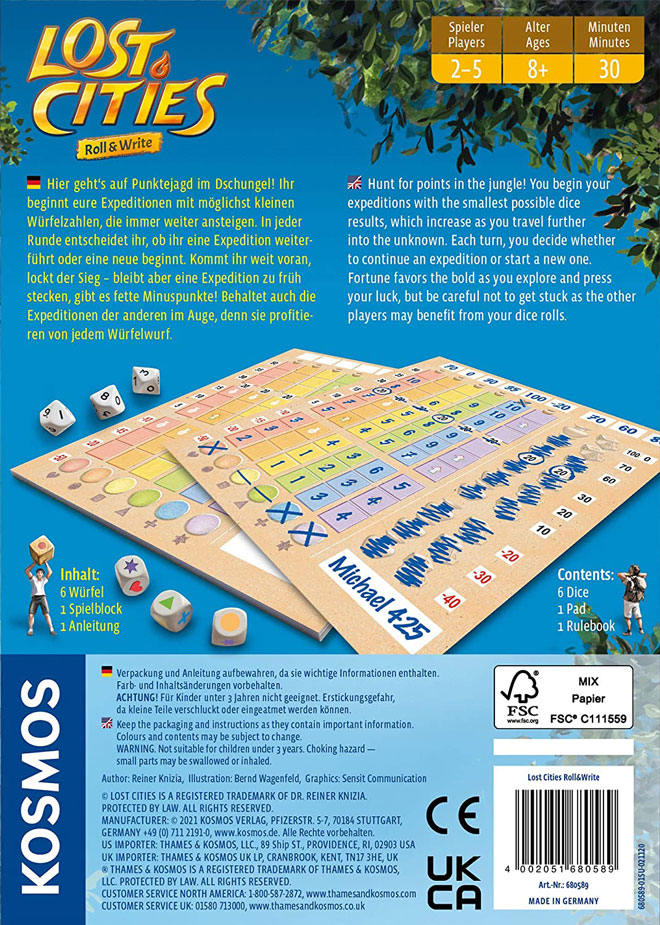
Final Thoughts
I think Lost Cities Roll and Write is a great game for 2-5 players. And I feel it is a great game for families! If you are a parent with 1-3 kids, then I feel like this is great game to add to your gaming library.
The game has an MSRP of $14.95. This price feels fair for a small game. This is pretty much in line with most Roll & Write games, as most are under $20. This game would make a nice stocking stuffer around Holiday Season.
This is a very easy game to pack in a travel bag as something to do when you get back to your hotel room on vacation. It is not too much of a table hog.
If you have a family that bickers a lot, there is not too much “griefing” going on in this game.
If you are a fan of the Lost Cities games, I feel this Roll & Write will give you a bit of that Lost Cities Feeling. One thing that makes the Lost Cities games cool game though is looking at your opponents board and holding cards back to keep them from scoring. You don’t necessarily get that here. But you can look at the your opponents’ sheets in this Roll and Write and try to beat them to the bridges!

